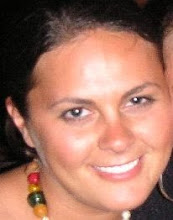Friday, November 12, 2010
Thursday, November 11, 2010
MN Stories Vlog
What I like about this vlog is that, even though it is an interview, they splice it up and incorporate video and music into it. The editing is very sophisticated and interesting and fun to watch. Another reason I like this vlog is that it is a kind of advertisement for something that flies a little under the radar in Minneapolis. Sound Unseen is a really interesting festival that gets little attention outside of the core audience, but since music is something Minneapolis is becoming known for, it's something that a lot of people would be interested in if they only knew about it.
The audience for this vlog is certainly people who are familiar with the festival and want to know what is playing there (well, this is from last year, but that was the intention). It is also for people who are not familiar with what it is and gives them a nice sense of what they might expect. Because the vlog has clips from the films that are playing, you can kind of figure out what the festival and each film that is highlighted is all about.
Sites like Blip.tv are great because they expose people to aspects of the community they might not otherwise have access to.
Witnessing Whittier
Since I wasn't there when the class went out into Dinkytown, I decided to do my ethnographic study in my own neighborhood, Whittier.
My neighborhood is very diverse and can be called a lot of things. It is "eat street," the MIA, MCAD, the International Neighborhood, among other things.
Based on the reading "Using Place-based Writing to Construct Social Worlds as Social and Cultural Spaces," I decided to do an informal observation at a popular location in Whittier. There, I observed three different aspects of the place: who was there, what were they doing, and what are some distinguishing features of the location? From there, I came to some conclusions about my neighborhood and tried to develop a sense of
I chose to do my ethnographic observation at Spyhouse Coffee Shop (pictures coming soon; camera cable has been misplaced...). This is one of the most popular places in Whittier and where a lot of people who live, work, and study in the neighborhood hang out.
- Most of the people here are young, "hipster" types. They are almost all on laptops. Others are drawing, writing in journals, a few are reading novels. I suspect that they are students from MCAD, as this is the nearest coffee shop. They are dressed in funky, vintage styles, and are somewhat aloof.
- There are a few older men gathered at a big table. They look a little weathered, like they may be recovering from some kind of addiction and this is their new routine. They keep going outside to smoke.
- Other than the group of men and a few couples working quietly in the booths, almost nobody is here together, chatting. It's pretty quiet, except for the noise of the coffee machines and people ordering.
- Based solely on appearances, there seems to be a lot of racial/cultural diversity among the people here.
- The music is pretty loud. It's indie music.
- The walls are covered with the artwork of a student from MCAD. They are large paintings depicting scenes from Spyhouse and the surrounding neighborhood.
- The building it is housed in is somewhat old, but restored. There are a lot of elaborate architectural details on the outside. The space inside is open, with a high ceiling.
- The decor is kitchy and vintage.
"Reflecting on [my] neighborhood as constructed space" leads me to "recognize issues" and realities about it. For example, because of MCAD, the majority of residents of the neighborhood are young and rent. Having majority renters in a space impacts the physical appearance of the area, as well as, say, the number of police cars one might see. Additionally, since many of the residents are young and in school, this may account for loud parties on weekends. If many of the people in the neighborhood are renting, it makes the area relatively cheap, which can be a blessing and a curse.
Focusing on a few key aspects of a place can reveal quite a bit about it. I am intrigued by the idea of having students do ethnographic studies of their neighborhoods in an effort to have them develop a sense of identity connected to that place. I think this is an especially useful exercise if they are asked, then, to compare their neighborhoods to others. Having students write poems or stories using pictures on VoiceThread or iMovie is a wonderful way for students to develop a sense of pride in their home, while also identifying things that may need help. This helps students get a sense of civic duty. I really like the idea of using House on Mango Street for this kind of unit. The other book that came to mind was Out of the Dust, since Billie Jo runs away from the suffocation of her Oklahoma dust bowl town only to discover that even though its hard, it's still her.
Subscribe to:
Posts (Atom)
